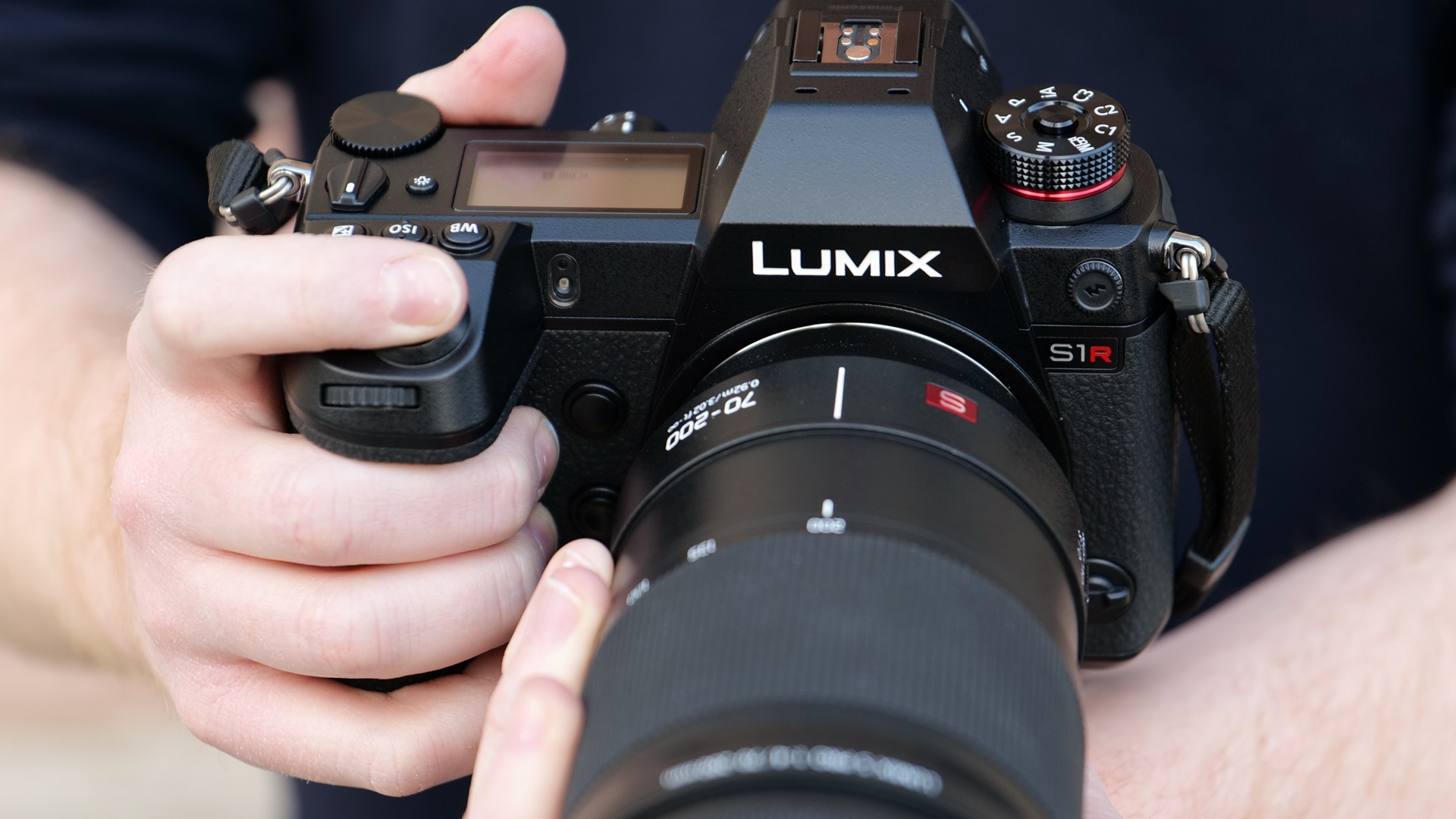Why you can trust TechRadar
Build and handling
- Magnesium alloy die-cast front and back panels
- Mechanical shutter rated to 400,000 actuations
- Weather-resistant construction
It's entirely normal for a new camera system to show plenty of design influence from a manufacturers's existing line, and the S1R is no exception. There is admittedly a great deal of fresh thinking here, but similarities between the S1R and recent G-series models are easy to find.
From the white balance, ISO and exposure compensation button triplet on the top plate through to the red trim below the mode dial, there's a lot of the Panasonic G9 right here. Indeed, from the front the S1R looks rather like a more boxy G9, although the controls around the body have been shifted, restyled and rethought on the larger body here.
This also means there's a little more space around the back for the thumb to sit, which, together with the size of the body, makes this camera ideal for those with larger hands, and who may find the likes of the Sony A7R III a little too compact. That's something of a mixed blessing, though, in that the body is fairly bulky (and weighty) compared to similar mirrorless cameras.





Still, with so many controls falling to hand, and the screen primed with touch functionality, it's easy to select and adjust all key settings. The large top plate also accommodates a generously sized display that shows key shooting information, and this lights up well when the lamp next to it is activated. This also has the effect of illuminating certain buttons on the back of the camera, which is a nice touch for those working in darker conditions with any frequency.
The focusing settings in particular are comprehensive and well thought out. The AF mode button enables you to quickly switch between focusing patterns, while the collar around it lets you flick between standard, continuous and manual focus without hassle. Next to it sits a (customizable) AF-On button, while a joystick underneath it allows for the AF point to be moved quickly across the frame – this works well, responding to diagonal movements in addition to vertical and horizontal ones.
We only really have two gripes here. First, the power control's placement isn't quite ideal for either the thumb or forefinger to access quickly and easily. The menu pad is also a little stiffer and less yielding than expected, and the freely moving ring around it slips easily when the up, down, left and right segments are pressed. Otherwise, there's little to fault here.
Autofocus
- Depth From Defocus AF system
- AF working range as low as -6EV
- Face, eye, animal and body detection
Panasonic has chosen to use the same type of contrast-detect AF system used in its G-series Micro Four Thirds cameras for the S1R, with Depth From Defocus (DFD) technology to help it find focus speedily. This makes the S1R, and its S1 sibling, which features the same system, rather the odd ones out in this area, given that every other key mirrorless manufacturers currently uses a hybrid AF system that brings together contrast-detect and phase-detect AF systems.
Whether this is an issue really depends on what it is you're shooting. Panasonic has traditionally had very fast contrast-detect AF on its cameras, and the S1R manages to get a lock on static subjects very quickly when the light is good. The fact that there's such a comprehensive range of focusing patterns to choose from also helps here.
It falls down in low light, however, getting there eventually but being a little more sluggish than the competition. The absence of phase-detect AF also affects the camera's ability to focus smoothly during video recording, which is discussed on the next page.
Panasonic has traditionally had very fast contrast-detect AF on its cameras, and the S1R manages to get a lock on static subjects very quickly when the light is good
Switch to continuous shooting and the focusing system also has the effect of wobbling the image in the viewfinder or on the LCD screen back and forth as it attempts to keep focus on the subject. While this is clearly working very quickly to keep a lock, it's noticeably less fluid to the eye than a phase-detect AF system on another camera set to do the same, although the actual adherence to subjects isn't too bad.
One thing that works very well is the subject detection. The first focusing pattern you come to is labelled Face/Eye/Body Detection, and this has the capability to detect animals too. This system places a box around the subject when it detects it, and does this quickly and with very good accuracy.
Current page: Build, handling and AF
Prev Page Introduction and key features Next Page Performance and image quality